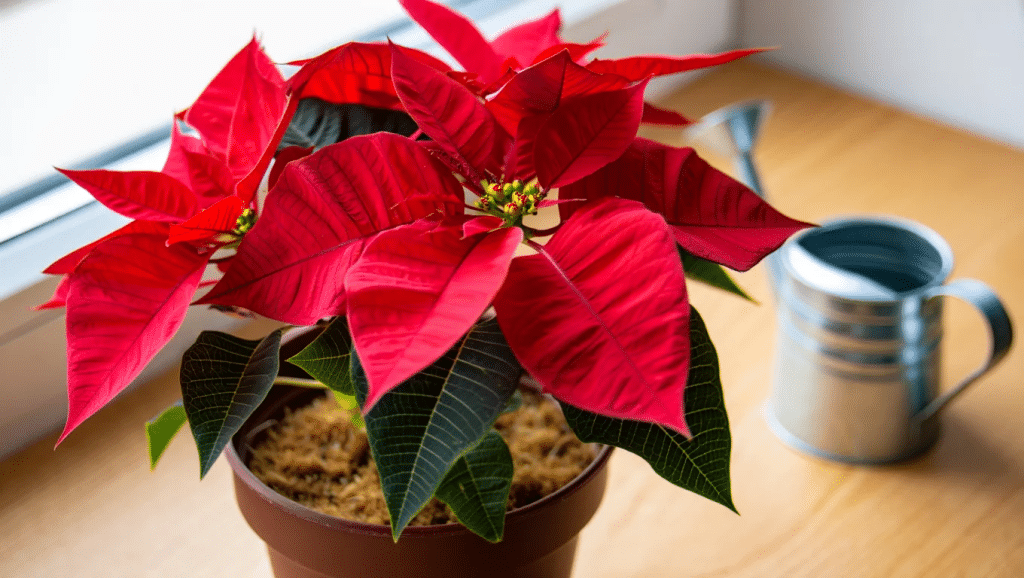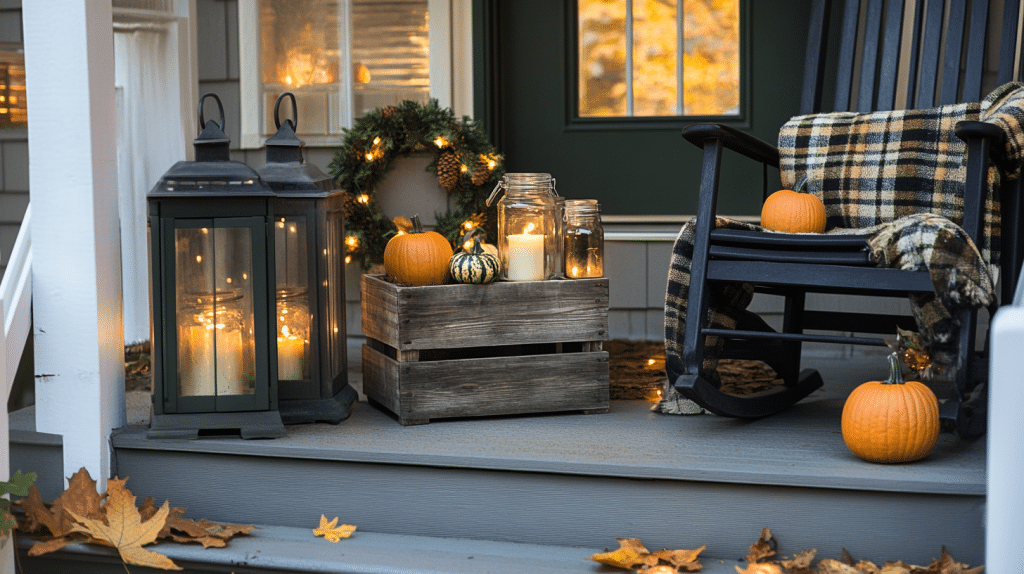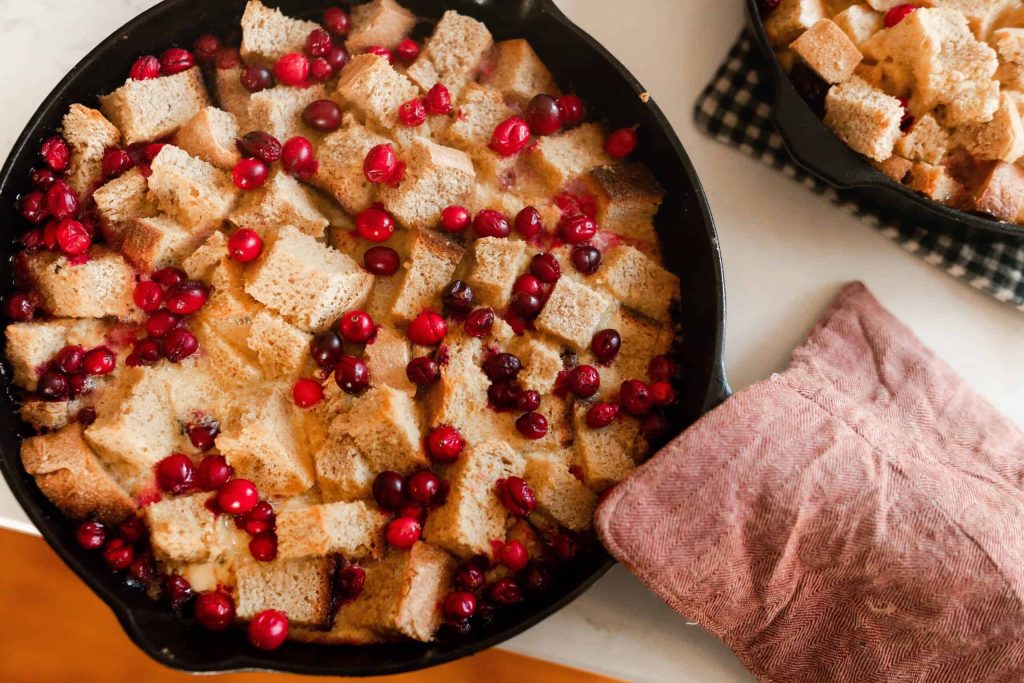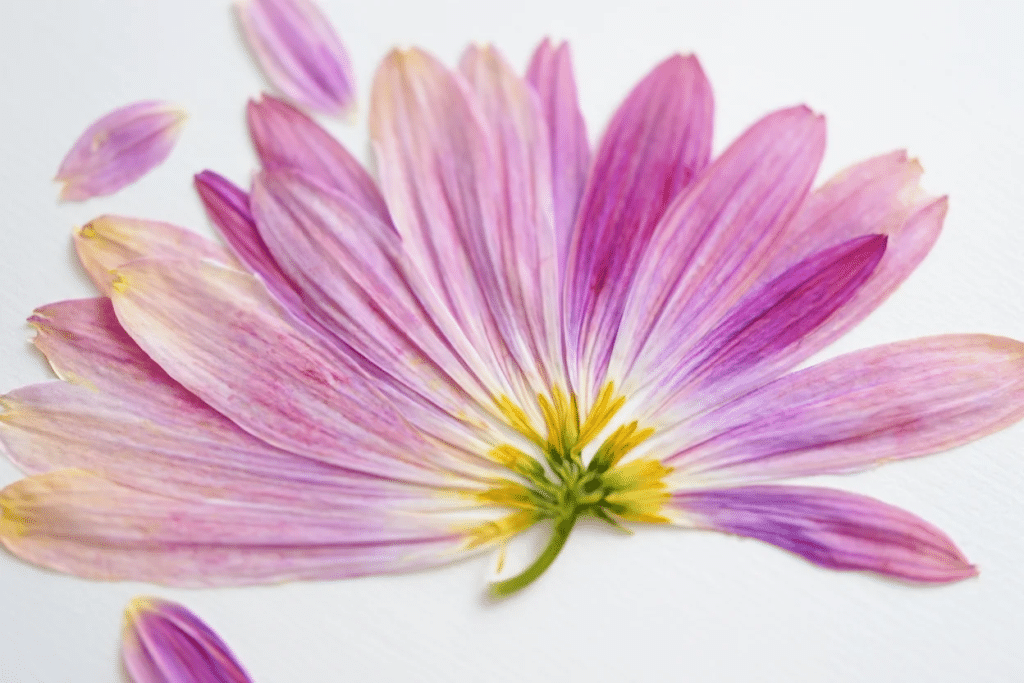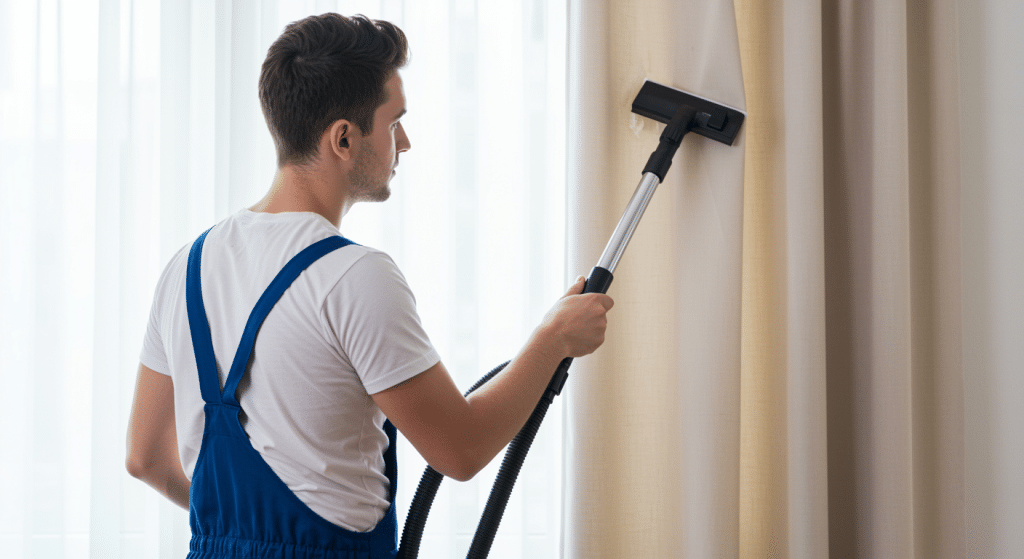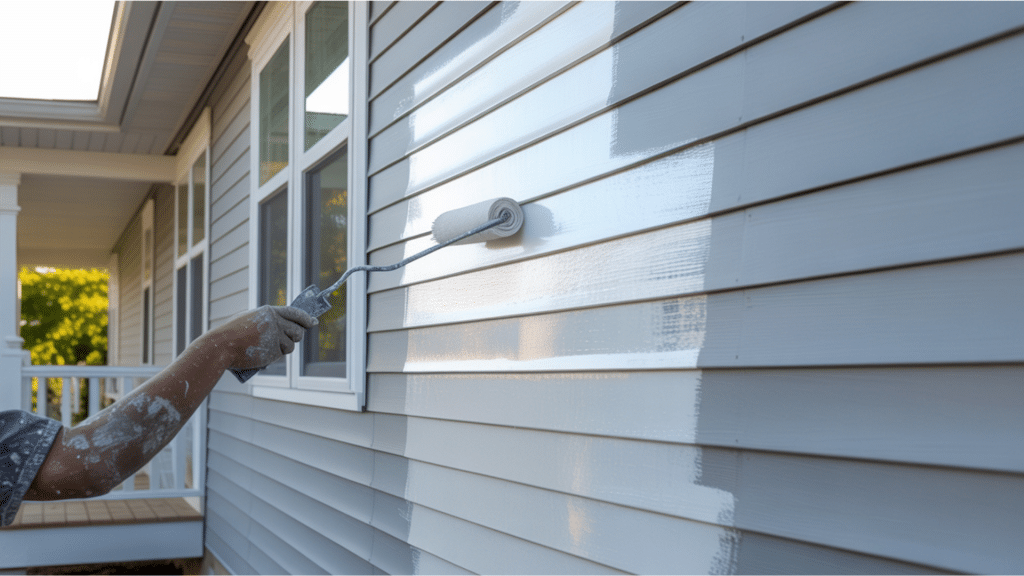I see it happen every holiday season. People either drown their poinsettias with daily watering or let them sit bone dry for weeks. Both mistakes kill these beautiful plants fast.
So do poinsettias need a lot of water? The answer is no, they need consistent, moderate watering.
I’ll show you exactly how much water your poinsettia needs and when to give it. You’ll learn simple tricks to check soil moisture and avoid the two biggest watering mistakes that ruin holiday plants.
Do Poinsettias Need a Lot of Water?
No, poinsettias don’t need a lot of water. I’ve killed more poinsettias with too much water than too little.
These plants prefer their soil to dry out slightly between waterings, not constant moisture like some houseplants.
When I say “moderate watering,” I mean about 1-2 cups of water for a standard 6-inch pot, given every 3-5 days. The water should drain completely from the bottom holes within 30 minutes. If water sits in the saucer longer than that, you’ve given too much.
Overwatered poinsettias show yellow leaves that drop quickly, soggy soil that smells sour, and soft, mushy stems near the base.
I’ve also noticed tiny gnats flying around overwatered plants. Underwatered plants have wilted, papery leaves, faded bracts that curl at the edges, and soil that pulls away from the pot sides.
Indoor poinsettias need water every 3-5 days in most homes. I check the soil with my finger – when the top inch feels dry, it’s time to water.
Outdoor poinsettias in warm climates may need daily watering during hot weather, but I still use the finger test to be sure. The key is consistency, not a rigid schedule.
How Often Should You Water Poinsettias?
Most poinsettias need water every 3-5 days, but I always check the soil first. Your specific schedule depends on several factors I’ve noticed over the years.
Container size affects watering frequency:
- Small pots (4-6 inches): Water every 2-3 days
- Medium pots (6-8 inches): Water every 3-4 days
- Large pots (8+ inches): Water every 4-5 days
Your home environment changes everything:
- Warm, dry homes: Water more often
- Cool, humid spaces: Water less frequently
- Near heating vents: Check soil daily
- Basement or cool rooms: Water every 5-7 days
I use two reliable methods to check soil moisture. The finger test works perfectly. I push my index finger one inch deep into the soil. If it feels dry, I water. If it’s still damp, I will wait another day.
Best Time of Day to Water Poinsettias
| Season | Watering Time | Frequency | Why It’s Important |
|---|---|---|---|
| Winter (December-February) | Early Morning | Less Frequent | Water early to allow soil to dry before night; decrease watering frequency to avoid excess moisture. |
| Spring (March-May) | Early Morning | Slightly Increased Frequency | Maintain morning schedule; increase watering slightly as the plant grows and needs more hydration. |
| Summer (June-August) | Early Morning | More Frequent | Increase watering to keep up with higher heat and increased growth rate of the plant. |
| General (All Year) | Morning (Avoid Evening) | Regular but Moderate Frequency | Daytime absorption ensures better hydration; avoid evening watering to reduce fungal risks and moisture retention. |
Where to Place Your Poinsettia for Hydration

The right location helps your poinsettia maintain steady moisture levels. I’ve learned that placement affects how often you need to water and how well your plant thrives.
1. Light considerations
I place my poinsettias in bright, indirect light near a south or east-facing window. Direct sunlight dries out the soil too quickly and can scorch the leaves.
Found that 6 hours of filtered light works perfectly for maintaining consistent moisture without stress.
2. Humidity factors
Winter heating systems dry out the air, which makes poinsettias lose water faster through their leaves. I keep mine away from heating vents and radiators.
A simple humidity tray with pebbles and water underneath the pot helps create a better microclimate around the plant.
3. Airflow matters
Good air circulation prevents fungal problems but too much wind dries plants out quickly. I avoid placing poinsettias near frequently opened doors or under ceiling fans.
A spot with gentle, indirect airflow keeps the plant healthy without causing rapid moisture loss.
4. Window placement vs. artificial light
Natural window light beats artificial light every time for poinsettias. I position mine 3-4 feet from a bright window where they get plenty of light but no direct sun.
If you must use artificial light, place grow lights 12-18 inches above the plant and run them for 12-14 hours daily.
5. Temperature stability
I keep my poinsettias in rooms that stay between 65-70°F during the day and don’t drop below 60°F at night. Temperature swings make plants either guzzle water or shut down completely.
Consistent temperatures mean consistent watering schedules, which makes care much easier.
Tips for Long-Term Poinsettia Health
Proper watering and humidity are crucial for healthy poinsettias. Follow these seasonal care tips to maintain vibrant blooms, prevent root rot, and ensure your plant thrives throughout the year.
- Water poinsettias every 3–5 days during blooming (Nov–Feb), when the top inch of soil is dry.
- After bracts fade in March, reduce watering to once a week or less, letting the top 1–2 inches dry out.
- During dormancy, water sparingly, only when the soil is dry two inches down, to prevent root rot.
- Use pebble trays: fill a saucer with pebbles and water (not touching the pot) to boost local humidity without soggy soil.
- Run a small humidifier nearby in winter; aim for 40–50% humidity and monitor with a hygrometer to slow leaf moisture loss.
- Avoid misting leaves with water droplets, which can cause fungal spots; focus on soil watering and room humidity for healthier plants.
To Conclude
After years of caring for poinsettias, I can tell you the secret isn’t complicated. These plants don’t want daily attention or constant watering.
They need you to pay attention to what they’re actually telling you through their soil and leaves.
Do poinsettias need a lot of water? The right amount of water beats too much water every single time. I check the soil, water when it’s dry an inch down, and let it drain completely.
Start tracking your watering routine this season. Note when you water and how your plant responds. I’d love to hear your success stories and any tricks you learn along the way!


